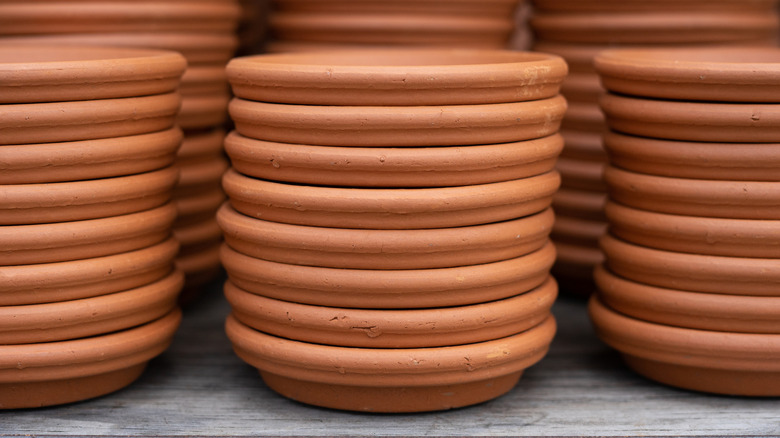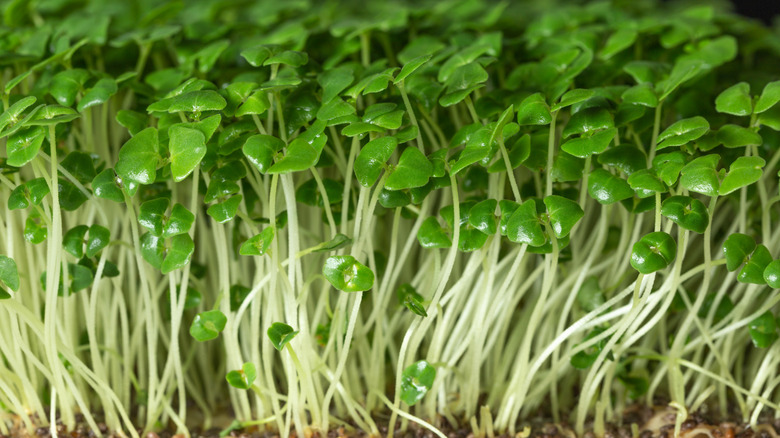The Easy-To-Grow Plant That Will Thrive In An Old Terra Cotta Plant Saucer
From ancient Greek temples and China's terracotta soldiers to modern architecture and sculptures, terracotta (translated from Italian as "baked earth") is a reliable and popular material across time and location. Terracotta pots also are used by the everyday gardener, giving us a more attractive option to their plastic counterparts. In addition, the porous nature of the clay promotes aeration and drainage, producing a healthier plant.
If you have spare terracotta saucers — typically paired with pots as a drip tray — don't toss them. They are perfect for growing chia plants (Salvia hispanica), which produce the seeds that are popular as a nutritional superfood. And, yes, we're talking about chia as in "Ch-ch-ch-chia!" These seeds have been beloved for decades for their ability to grow their leaves into the shapes of animals, cartoon characters, and celebrities. However, you don't need to purchase a Chia Pet to grow your own chia microgreens. Because these seeds produce mucilage (a gel-like substance) when wet, they can successfully germinate on any type of porous surface, like a terracotta saucer. While you can grow chia in soil, dirt is actually not necessary.
A used terracotta dish will first need to be sanitized before being used to grow seeds, especially if they have white powder often seen on terracotta pots. Scrub off any dirt and then wash the dish in soapy water. Rinse off the soap and then place the saucer in a solution that is one part household bleach to nine parts water. Let it soak for about 10 minutes before rinsing again.
Growing your own ch-ch-ch-chia seeds
Now that your saucer is clean, soak it again in clean water so that it will be thoroughly moist for the seeds. For a tray that is about 5 inches in diameter, use 1 to 2 teaspoons of dry seeds. Since terracotta is so porous, place another tray or dish underneath your saucer. Sprinkle the seeds onto the saucer, spacing them out as evenly as possible to give them space to sprout.
Although not essential, you can cover the seeds with a clear glass bowl, pot lid, or plastic wrap to create a humid environment. You will, however, need to take the cover on and off to spray the seeds frequently. It is important to monitor the terracotta dish, misting it whenever it starts to dry up. For the best growing conditions, give the seeds low light, while also keeping them warm. Around 70 degrees Fahrenheit is ideal.
Within three to seven days, the seeds should begin to sprout. Harvest the plants when you see full, green leaves. Since the sprouts will last longer when dry — as moisture increases the likelihood of rotting — avoid spraying them within eight to 12 hours of cutting. Try to eat them as quickly as possible; otherwise, gently dry them off before storing them in the fridge in a sealed glass container.

